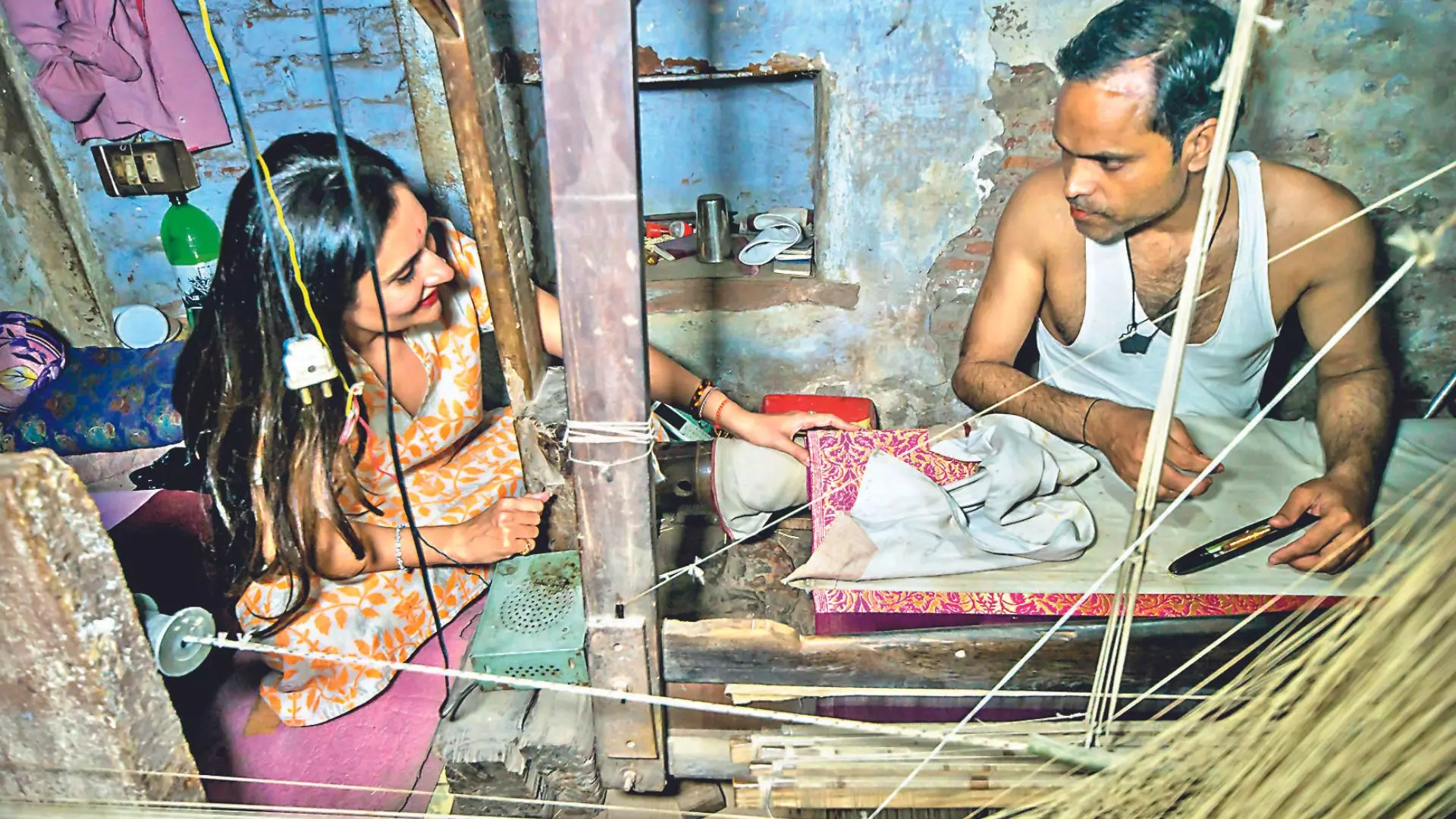An ode to handlooms
On August 7, National Handloom Day, fashion designers pay tribute to the resilience and creativity of handloom weavers, acknowledging their significant contribution to India’s economy and identity

The fruits of India’s looms attracted traders from countries across oceans and mountains over many centuries. The visitors were fascinated by the soft cottons, the sheer muslins, the rich silks. And fine fabric, from the gleaming Bararasi silks to the comfortable, homespun khadi cottons, continues to be much valued, not only abroad, but also by our own countrymen.
In pockets across the country, handloom weavers have been creating their own special brands of cloth, with typical designs and counts of threads. Mechanisation gave them stiff competition, and the craft fell into the doldrums, but luckily, those who realised the value of the age-old traditions breathed new life into spinning and weaving, adding contemporary touches to patterns and finding new uses for the textiles. And handloom is beginning to find its feet again.
Making the past relevant
“It is essential to reflect on the remarkable, globally influencing journey of our handloom sector and the incredible innovations that have breathed new life into this ancient craft,” designer Gaurang Shah, known as the master of weaves, says.
A household name for his high-end jamdani sarees and outfits, Gaurang has recreated renowned Raja Ravi Varma paintings, weaving them as Khadi cloth. He says, “The evolution of handlooms is not just about preserving the past; it’s about reinventing it to resonate with the present and future generations. Khadi, with its simplicity and natural charm, has seen a resurgence through the introduction of varied textures and experimental dyeing techniques. This has not only enhanced its appeal but also reinforced its status as a symbol of sustainable fashion.”
As old as the Indus Valley Civilization
"Early evidence of weaving and spinning dates back to the ancient Indus Valley civilisation in India,” says Sagrika Rai, Founder & Creative Director of Warp ‘n Weft. “This marked the beginning of a robust tradition that has persisted through the ages. Indian handloom weaving thrived under the patronage of royalty, with each kingdom and dynasty contributing distinct textile styles.” She adds, “The Mughals, renowned for promoting fine muslin and silk fabrics, and the Vijayanagar Empire, celebrated for its opulent gold-threaded brocades, exemplify this diversity. Varanasi’s silk stands out as a luxurious product of age-old weaving techniques, while Kashmir takes pride in Pashmina, a fine type of cashmere wool. Gujarat’s Patola, a double ikat weave, symbolises luxury and social status, while Odisha and Andhra Pradesh are renowned for their intricate Ikat dyeing technique.”
Weaving the old with the new
“In the realm of global fashion, the goal is to craft something exceptional that is also kind to nature, promoting longevity and sustainability. Fashion need not be defined by cost or excessive glamour; instead, it offers a new approach to preserving nature and minimising harm,” notes Sagarika.
Terms like Banarasi, Chanderi, Paithani, Patan Patola and Bandhani are well-known to today’s youngsters, thanks to awareness-creating initiatives like National Handloom Day. Owning these handloom fabrics is now a matter of pride. “The new generation has embraced the concept of blending handloom with contemporary fashion, believing that these two worlds can coexist harmoniously. The integration of modern fashion with traditional handloom has brought a fresh and captivating twist to both industries,” says Sagrika.
Avani Karan Chandan, co-founder of The House of Ara, a homegrown and sustainable ready-to-wear label, says, “Promoting handlooms is not just about fashion; it’s about sustaining the livelihoods of the weavers and preserving an art form that is inherently sustainable and eco-friendly. Through our collections, we strive to blend the old with the new, bringing handloom into modern wardrobes while respecting its roots.”
Advantage Artisan
“The hand-spun and handwoven are not just ways to encourage simplicity; they also work for progress at the grassroots levels. With passion vision, and expertise, we have designed outfits that promote the handloom industry,” says designer Shilpi Gupta, adding, “with every fabric, print and design, we aim to help local artisans. Creating outfits using handwoven fabrics and materials helps to promote sustainability and reduce waste. We need to protect our vast heritage of fabrics that are part of our culture and tradition, and thereby foster the growth of local communities of talented artisans.”
Reviving the handloom industry involves more than just creating beautiful textiles. “It requires a concerted effort to educate consumers about the value of handmade products, the labour involved, and the importance of supporting sustainable practices,” says Avani, adding, “By experimenting with new patterns, colours and fabric blends, we aim to keep the art of handloom weaving relevant and exciting for future generations.”
A win for the environment
Prakhar Rao, founder of Zero Tolerance, a contemporary fashion brand, says Khadi is a boon to both the skin and the environment. “By working with handwoven textiles like Khadi, we can bring about positive change, as these artisanal creations have negligible carbon emissions while preserving centuries-old techniques of fabric making. We work with a local NGO that works to uplift under-represented communities, such as skilled weavers in a small town called Barabanki on the outskirts of Lucknow. In an era where machines dominate production, many clients opt for mass-produced fabrics over quality because it is less time-consuming. Yet, these dedicated weavers continue to craft high-quality, limited-edition textiles that reflect our rich heritage,” says Prakhar.
Lets honour the legacy of Indian heritage, traditions, artisans, and artists who have played a pivotal role in promoting, reviving, and reinventing the handloom industry in India. We must also credit women from all walks of life, including celebrities, who have championed the cause of handlooms, showcasing these exquisite textiles on global platforms. Their support has been instrumental in elevating the status of handloom products, ensuring that this rich heritage continues to thrive.” — Gaurang Shah, the award-winning textile designer
